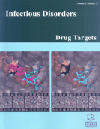
Full text loading...
The increasing incidence of multidrug-resistant tuberculosis (MDR-TB) is one of the most challenging tasks in tuberculosis treatment. Conventional TB treatment regimens have proven ineffective in treating MDR-TB, thus demanding the development of new drugs followed by delivery systems. Bedaquiline, a novel anti-TB drug, has been reported to inhibit the ATP synthase required for the growth and replication of TB bacteria. Bedaquiline is able to target the persistent or latent form of TB, which remains difficult to treat with conventional drugs. This makes bedaquiline an important drug in the fight against MDR-TB. The drug has been approved by the US FDA as well as European Medicines Agency and is now widely used as part of combination therapy for the treatment of MDR-TB. Bedaquiline and its advanced drug delivery system play a key role in tackling MDR-TB, providing a much-needed boost to control and eventually eliminate the disease. However, the cost of the drug remains a concern, and efforts are underway to make bedaquiline more accessible and affordable to patients in resource-limited settings. Nevertheless, the development of bedaquiline nanoformulations represents a significant step forward in the fight against TB and offers hope to millions of patients across the globe.

Article metrics loading...

Full text loading...
References


Data & Media loading...

